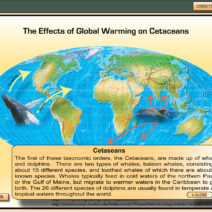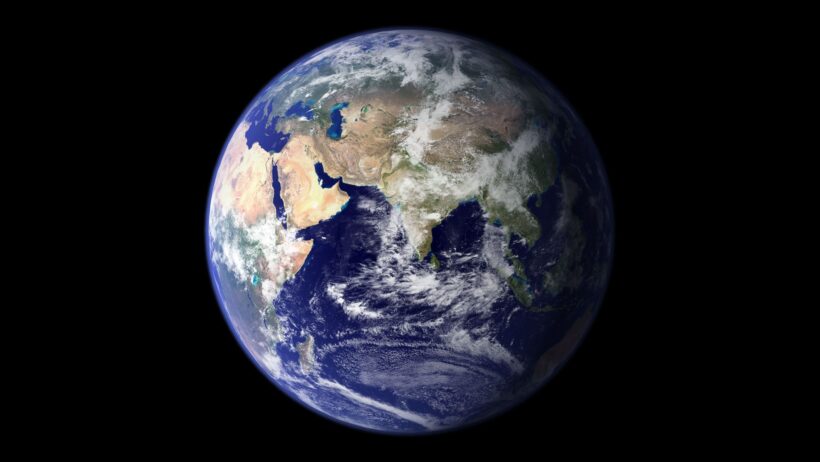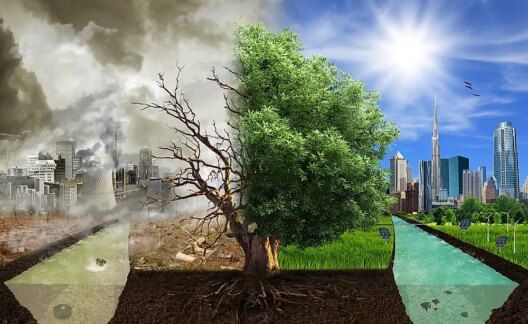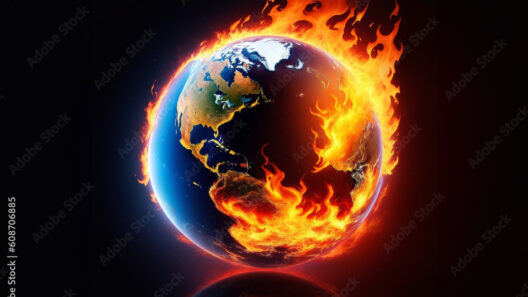The concept of Earth morphing into a hellscape reminiscent of Venus is an alarming thought, and it beckons an urgent discourse about climate change and its dire implications. Venus, often referred to as Earth’s “twin” due to its similar size and position in the solar system, presents a striking case study in planetary evolution and atmospheric dynamics. While the two planets share many similarities, the divergent trajectories they have taken offer essential insights into the consequences of unchecked global warming.
At the heart of this discussion lies the greenhouse effect—an atmospheric phenomenon where certain gases trap heat from the sun, preventing it from escaping back into space. On Earth, this effect is vital for maintaining a temperature conducive to life. However, an excessive accumulation of greenhouse gases, primarily due to anthropogenic activities, drastically intensifies this effect. The comparison with Venus is poignant; the planet’s atmosphere is composed mainly of carbon dioxide with clouds of sulfuric acid, resulting in surface temperatures that soar above 900 degrees Fahrenheit. Such extremes raise the question: could Earth, if current trends continue, succumb to a similar fate?
One primary driver of climate change is the relentless reliance on fossil fuels. The combustion of these fuels releases copious amounts of carbon dioxide and other greenhouse gases into the atmosphere. The current trajectory suggests that if fossil fuel consumption continues unabated, Earth’s temperature could rise by several degrees Celsius by the end of this century. Even a seemingly innocuous increase of 2 degrees can have catastrophic consequences, leading to widespread ecological disruption, altered weather patterns, and increased frequency of extreme weather events.
Discerning the multifaceted implications of rising temperatures is crucial for understanding the gravity of the situation. The melting of polar ice caps and glaciers is perhaps one of the most visible manifestations of climate change. These ice masses serve as natural reflectors of sunlight, contributing to a balanced climate. Their diminishment not only exacerbates sea-level rise but also reduces the planet’s albedo effect, leading to further warming—a runaway feedback loop reminiscent of processes that might have occurred on Venus during its contraction into an uninhabitable state.
In addition to polar meltdown, the increasing temperatures catalyze ocean warming, which poses a severe threat to marine ecosystems. Coral reefs, often termed the rainforest of the sea, are acutely vulnerable to temperature fluctuations. The phenomenon of coral bleaching, where corals expel the symbiotic algae that provide them with nutrition, is already observable. Should these patterns continue, entire marine ecosystems could collapse, mirroring the loss of biodiversity seen on Venus where harsh environmental conditions precluded the existence of complex life forms.
Moreover, as the climate warms, the frequency and intensity of extreme weather events are expected to escalate. Hurricanes, typhoons, and intense rainfall can lead to devastating floods and infrastructure collapse. In addition, prolonged droughts could decimate agricultural yields, undermining food security. This convergence of adverse events amplifies the vulnerability of societies, particularly in developing nations that lack the resilience to cope with such environmental shocks. The socio-economic ripple effects could fuel conflicts over scarce resources, akin to the cataclysmic changes observed on our neighboring planet.
Another aspect to consider is human health. The increase in heatwaves and the proliferation of vector-borne diseases will have dire consequences for global public health. As temperatures rise, so does the risk of health-related issues, ranging from heat stress to the spread of infectious diseases like malaria and dengue fever. With systemic healthcare challenges already prevalent in many regions, the potential for an escalation of public health crises becomes a daunting prospect. Sections of the population, particularly the young and elderly, will bear the brunt of these changes, reminiscent of how life forms on Venus were eradicated due to severe surface conditions.
However, it is essential to recognize that the trajectory toward a Venus-like Earth is not inevitable. The confluence of technological innovations and policy reforms holds potential for mitigating further changes to our climate. Transitioning to renewable energy sources, implementing rigorous emissions reduction strategies, and reforestation efforts are vital components of a broad-spectrum approach towards climate resilience. Global initiatives, like the Paris Agreement, serve as frameworks for countries to commit to reducing carbon emissions and fostering sustainable practices.
Education and awareness play formidable roles in combating climate change. By fostering a culture of environmental stewardship, societies can develop a collective ethos that values sustainability. This cultural shift can happen through the incorporation of environmental literacy in education systems, aimed at instilling an understanding of the consequences of climate change and motivating proactive measures among future generations. After all, they will inherit this planet, and it is paramount that they are equipped with the knowledge and tools to prevent its degradation.
In conclusion, while the specter of Earth undergoing a transformative shift toward a Venus-like state looms large, proactive measures can pivot us back from the brink. The decisions made in the present will resonate into the future and determine the legacy we leave for subsequent generations. It is imperative to take heed of the lessons learned from our planet’s evolutionary neighbor and galvanize our efforts towards sustainable living and environmental preservation. The stakes are too high, and the ramifications too severe to ignore; the clock is ticking, and immediate action is essential.







